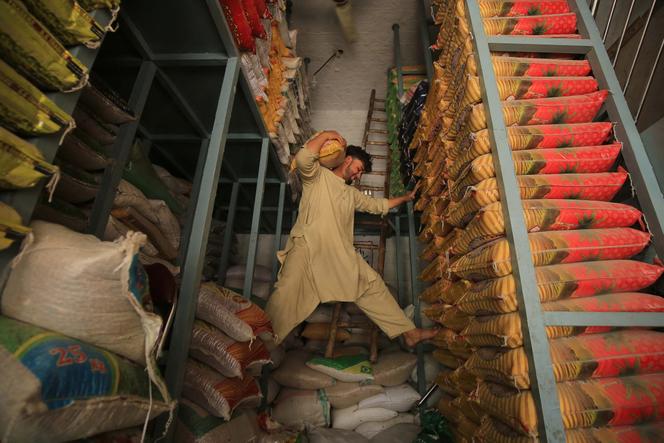


Wisps of steam billow from huge dryers stretching vertically into the sky. Inside the factories of Chaman Lal Setia Exports, one of India's largest Basmati exporters, clouds of rice dust envelop the air along to the incessant sounds of machinery. This rice mill in Karnal, 150 kilometers North of New Delhi, processes and packages 500 to 800 tonnes of Basmati rice every day.
There, the plant harvested from the surrounding fields undergoes a whole series of transformations and polishing to achieve perfection. After a final mechanical sorting phase, all that's left are the elegant, naturally fragrant, long grains of white or cream-colored rice characteristic of Basmati. Loaded lorries then take the noble grain to Indian ports, from where it is shipped to over 80 countries: Malaysia, the US, Israel and Europe.
For centuries, Basmati was grown on the Indo-Gangetic plain of the Indian subcontinent, now divided between India and Pakistan. The enemy neighbors are the world's only two exporters of the grain. "Over the years, many Basmati varieties have been created to improve rice quality and achieve the result we have today," said Vijay Setia, Director of Chaman Lal Setia Exports. India alone has 34 Basmati varieties, compared to 24 in Pakistan.
In 2018, as exports of Indian Basmati to the European Union (EU) fell drastically in favor of Pakistan, New Delhi launched a highly symbolic sales offensive against Islamabad. India is applying for a Protected Geographical Indication (PGI) with the European Commission to obtain exclusive use of the term "Basmati" in the EU.
This label "highlights the link between the geographical region concerned and the name of the product, when a particular quality, reputation or other characteristics are essentially due to the geographical origin." Champagne enjoys the status, which not only allows producers from the French region to use the name but also to sell their products at a higher price. When the label was granted to Darjeeling tea in 2011, prices soared.
India has been at the forefront of Basmati protection. At the end of the 1990s, an American brand attempted to register a patent on so-called "Basmati" rice varieties developed and grown in Texas. The Indian and Pakistani governments opposed the move and won the case. India then began to protect Basmati. The first step was to define the country's geographical production zones for this fragrant rice, a prerequisite for PGI recognition by the EU. "Our duty is to protect our rice on international markets, and Pakistan should have done the same," said Ashok Kumar Singh, director of the Indian Agricultural Research Institute. Islamabad, lagging behind its neighbor, ended up waiting until 2021 to establish the bounds of geographical production zones for Basmati.
You have 67.77% of this article left to read. The rest is for subscribers only.
